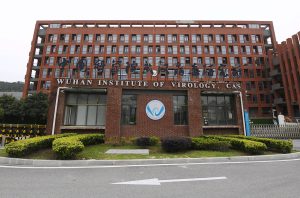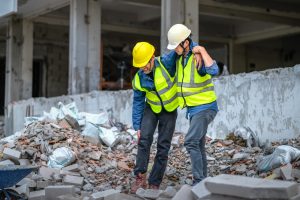In this article, Lawyer Monthly hears from Jeff Martin at Fortress BEC, who sheds further light on the state of the construction industry as it currently stands. In this feature he focuses on building envelope consulting, the challenges of modern construction matters and why the legal sector ought to anticipate a wave of construction litigation in 2023 – and even beyond it.
What does building envelope consulting entail?
The building envelope is often referred to as the ‘wrap’ of the structure. In basic terms, it is the exterior components of the roofing, walls and below grade (where applicable) waterproofing which help to keep the moisture and air out of the building. Our primary focus is therefore on the details of the construction of that envelope. This often begins at the design phase with assisting the designers in getting proven waterproofing details incorporated into that design.
We can then follow that design into the field and monitor, test and report on the quality assurance of the installed work. We are also engaged in forensic work, which is where we try to find out what went wrong either in the design or in the construction of the project and provide a solution going forward to mitigate the water intrusion issues.
What services does Fortress BEC offer in this area?
Our firm helps with the design of the roofing, weather barrier (WRB for short), waterproofing and other components. We often help architects and owners to provide better designs, detailing and material selection on new projects. We also undertake design work as the prime firm on many renovations and remodelling projects. Testing during construction and observations for compliance are both important aspects of our services. We also provide condition assessments for building reviews as well as forensic and legal help when things go wrong.
How can building envelope expertise aid in legal matters?
According to the American Institute of Architecture (AIA) as well as other construction-related organisations, moisture-related issues are one of the main causes of litigation in today’s market. When water enters a structure, numerous problems can and will likely develop. These include everything from a minor inconvenience to more severe issues. Water intrusion into any building can, and likely will, damage the building components. This can result in a myriad of problems, such as a loss of R value within the building assembly, unsightly stains, mould, mildew and other biological growth as well as slip-and-fall hazards.
According to the American Institute of Architecture (AIA) as well as other construction-related organisations, moisture-related issues are one of the main causes of litigation in today’s market.
A knowledgeable building envelope expert can help legal firms to determine the cause of the damage, the extent of the problems and pathways for remediation.
What sort of matters are you generally engaged on?
We continue to help in the design phase on both new construction and renovation/replacement work for roofing, walls, waterproofing and more. Testing in the form of ASTM water testing methods of high and low voltage of roofs and plaza decks, infrared and capacitance scans and other procedures can be utilised. There remain significant challenges in the construction field due to labour shortages and a lack of proper training increases the need for project oversight.
How have you witnessed the construction industry develop during your time in practice?
Since we started in the mid-1980s, the building construction envelope has evolved dramatically. Building materials and construction practices have changed – some for the better, some not so much. We are asking for a lot more of our structures than we used to, mainly in the increased demand for energy efficiency. These demands have moved the market to produce new and more complex materials and construction methods to provide maximum energy efficiency, and we see no end to this advancement in sight.
One of the biggest challenges in our industry has been communication technology. To be able to speak to a person on the jobsite with live video is incredible and the ability to mitigate issues or details in real time and report to all parties so quickly is a game changer.
One negative factor we have noticed is the lack of younger tradespersons entering the construction field. This remains a continuing challenge.
What are the key problems you currently see in the construction sector in your jurisdiction?
The construction sector has numerous challenges both today and moving forward. I believe the largest impact is the retirement of older skilled personnel and the lack of younger persons entering the construction workforce, especially in the skilled trades. This also exists in the architecture and engineering fields.
The construction sector has numerous challenges both today and moving forward.
The quality and completeness of construction documents provided to builders is at times, to put it bluntly, simply atrocious. This puts the onus on the individual trade contractor to do much of the design work for their trade – or even worse, assume or guess at what was intended.
There is also a severe lack of adequate training for installation crews. We constantly hear the phrase: “Well, that’s the way I’ve always done it”, and this can be detrimental to the integrity of the end product. Training is improving in some sectors but continues to lag behind what is necessary.
Construction time expectations for delivery of projects are extremely tight and we have observed some buildings being rushed to completion. This can lead to improper sequencing of the building components and their eventual failure. Many of these problems become expensive to correct once the structure is complete.
How has the roofing industry been impacted by the COVID-19 pandemic?
The pandemic’s biggest impact was material shortages, which greatly impaired construction schedules. A fair number of problems arose out of panic to keep the construction schedule on track. Materials that were specified (and unavailable) were switched to ones that were accessible, to the detriment of the design. Many of these may lead to eventual failure.
Starts and stops on some projects have also been a challenge. On some projects, different crews within the company (and in some cases, even different subcontractors) return after work stoppages, which leads to unfamiliarity with the scope and installation.
Do you continue to see issues in the supply chain? How much of this is due to the pandemic?
We do continue to see materials supply chain issues but it has and continues to improve. Most of this was due to the pandemic but construction has been strong for the past several years and the supply chain was somewhat stretched out even before COVID.
What further developments in the construction industry do you expect to see in the year to come?
We expect the supply chain to continue to moderate and a possible slowdown in the construction field as interest rates increase. One thing we certainly expect this year and for the next several years is additional litigation from construction failures.
[ymal]
Due to the pandemic, supply chain issues and the shortage of skilled labour, construction over the past several years faced severe headwinds and we observed many projects which were rushed to completion or were not installed per plans and specs. We believe failures will be the result of several factors, including but not limited to the following:
- Supply chain issues where materials were substituted and did not match the original design.
- Material warranty failures due to mismatching of the materials.
- Issues with projects which had start/stop in the construction schedule.
- The drive by some owners to continue to demand unrealistic schedules.
- Problems with the labour shortage.
- Issues with subcontractors ‘farming’ out their work to lower tier subcontractors who were not qualified but were cheap in pricing or could just provide bodies on the site.
- Lack of proper or qualified supervision.
- Lack of proper design in the plans and specifications due to inexperience in the architecture/engineering fields.
- The drive to continue to make structures more air/watertight with varying materials and processes.
It is our opinion that, due to the above factors, we should expect to see a huge wave of construction litigation in the upcoming months and years. Much of this will be the result of water intrusion through the building envelope and the associated problems.
Jeff Martin and Mark Stewart
Fortress Building Envelope Consulting
Tel: +1 919-730-1785 | +1 864-965-8668
E: jmartin@fortressbec.com | mstewart@fortressbec.com
Jeff Martin is trained in all facets of roofing and building envelope design, with extensive experience in proper construction installation and protecting owners’ interests throughout the entire project process. He has worked as a contractor and a consultant on a range of projects across the healthcare, industrial, institutional, commercial, housing and residential sectors, and holds several certifications in the building envelope area.
Mark Stewart is an RRC (Registered Roof Consultant) and Certified EIFS Inspector with a bachelor's degree in Construction Management from East Carolina University. For over 30 years, Mark has worked in the commercial roofing industry in the roles of project manager and estimator, and in 2013 was named Manager of Estimating and Sales. Mark has significant experience with multitudes of commercial roofing projects from the simple to the complex. He also served as the District 4 director of the local CRSMCA (Carolina Roofing and Sheet Metal Association).
Fortress BEC provides comprehensive building envelope consulting throughout the United States. With over 60 years of experience in contracting and consulting, the firm covers a broad range of services to guarantee building envelope integrity.





















